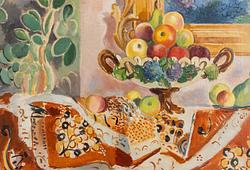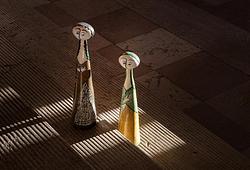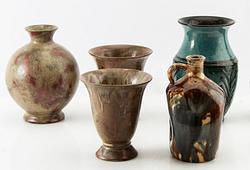Leander Engström
"Parken"
Signed Leander Engström and dated Roma 1921. Canvas 61.5 x 46 cm.
Alkuperä - Provenienssi
Previously in Doctor Gustaf Hedberg's collection.
Kirjallisuus
Nils Palmgren, "Leander Engström", 1939. Illustrated p. 91.
Muut tiedot
Leander Engström holds a unique position in Swedish art history as one of the most colorful and passionate expressionists of the early 20th century.
Born in Ytterhogdal in the region of Härjedalen and raised in the landscapes of northern Sweden, Engström carried with him a deep sense of nature’s grandeur and drama—something that would become a fundamental theme in his artistic work. He studied at the Konstnärsförbundet School in Stockholm and later traveled to Paris, where in 1911 he met the circle of Swedish artists surrounding Matisse. There he discovered the expressive possibilities of color—an encounter that would profoundly shape his vision.
Back in Sweden, Engström became one of the key figures in the younger generation of artists who exhibited at the legendary De Unga exhibition in 1909 and later at the Expressionist Exhibition in 1918.
He is especially known for his motifs from Tornedalen in the far north of Sweden, where he found an inexhaustible source of inspiration. The northern mountains, the Sámi people, reindeer herding, and the shifting arctic light are all depicted in works that pulse with life and presence. At the same time, Engström traveled frequently—to Italy, France, and Spain—and these journeys introduced new dimensions to his art: variations of light, urban scenes, architecture, and diverse cultural impressions.
His 1921 painting Two Girls by a Fountain, created in Rome, is a clear example of his ability to merge Nordic temperament with Southern European light and atmosphere.















































